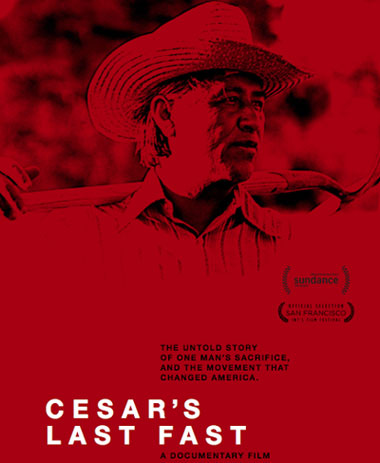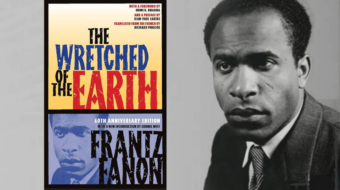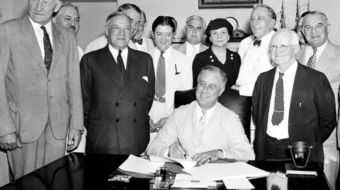
Jesus may have had a Last Supper but Cesar Chavez had a Final Fast. The Cesar saga about a real-life legendary labor leader and civil rights icon provides – no pun intended – fertile soil for cinematic plowing. Now we have not one full-length film concentrating on this trailblazing Chicano hero but two! – a case of feast or famine. Richard Ray Perez’s stellar nonfiction Cesar’s Last Fast is a perfect companion piece for the superb new Cesar Chavez biopic. With both films focusing on the same subject, covering much of the same ground and being theatrically released within weeks of one another, this pair of pictures is also a case study in comparing feature and documentary filmmaking.
Whereas Diego Luna’s Chavez, shot on location in Mexico, mostly reenacts and dramatizes the title character’s life and movement, Fast creatively uses heaps of news clips and original interviews conducted specifically for the doc to tell Cesar’s sizzling story. Fast contains more detailed information about Cesar and his unionization cause, whereas Chavez is more entertaining. Both, however, are highly dramatic, as they cover union organizing in the fields and strikes against all odds, boycotts, marches, and Cesar’s deployment of Gandhian tactics of nonviolent resistance in his crusade for pickers to live a better life.
Although there’s material about his hard luck childhood at Delano, California, and so on, Perez’s skillfully made documentary highlights Cesar’s use of fasting as a way to win social struggles. In particular, it zooms in on Cesar’s lengthy, final fast in 1988. Exactly why did Cesar risk death by refusing to eat for more than an entire month? Often, environmentalists and labor – especially blue collar workers – are portrayed as being at loggerheads with one another. But Cesar’s specific reason for declining food for weeks was to shame the growers into stopping the spraying of crops with pesticide. Fast’s archival footage reveals the birth defects a disproportionate number of pickers’ children suffered, amidst allegations of cancer clusters caused by the choppers, bi-planes, etc., dumping their poison on the crops – and those who harvested them.
The documentary’s talking heads include UFW stalwarts – Helen Chavez, Dolores Huerta, Cesar’s brother Richard Chavez – and also delves into the roles played by the Kennedy clan, Jesse Jackson, Jerry Brown, and other notables, along with the all important proverbial “cast of thousands,” aka “the salt of the Earth,” who marched and fought alongside Cesar.
Perez’s nonfiction film gives us a fuller and more accurate picture of the real Cesar than is glimpsed in the feature. However, be forewarned: Some viewers who uncritically lionize Cesar may not like everything they see – such as the UFW’s actions against Mexicans who were being shipped across the border to bust the union of mostly Mexican-Americans. Given today’s context of immigration conflicts and “deporter-in-chief” Obama’s record sky-high deportations of millions of undocumented residents, it’s uncomfortable to hear the much-lauded Cesar, in his own words, call his brethren from south of the border “illegal aliens.”
The falling out between Cesar and Gilbert Padilla over tactical differences and Cesar’s banishment of his fellow organizer from the union is likewise distressing (according to the version events Padilla recounts onscreen).
While Cesar’s reputation may not be unscathed, he still emerges as a noble working-class hero who, in his heyday, bettered the lives of multitudes of the least of these among us, alleviating the conditions of the wretched of the Earth. Perez tells the tale so well for two reasons: One, he himself, like Michael Peña (Chavez in Luna’s pic), is the son of a picker. Secondly, Perez is a talented filmmaker. Along with Joan Sekler and Robert Greenwald and their 2002 nonfiction film Unprecedented: The 2000 Presidential Election, he helped launch the post-9/11 “Tidal Wave of Dissident Docs” that challenged the Bush regime and helped forge a new path of the documentary as a dissenting art form in a world of sold-out corporate media, where “breaking” news is a verb, not an adjective.
As admirable as Cesar Chavez was, I have a humble suggestion for winning strikes and social struggles in the 21st century: Don’t starve yourself, but make the bosses and oppressors suffer by inflicting the misery on them that they so richly deserve.










